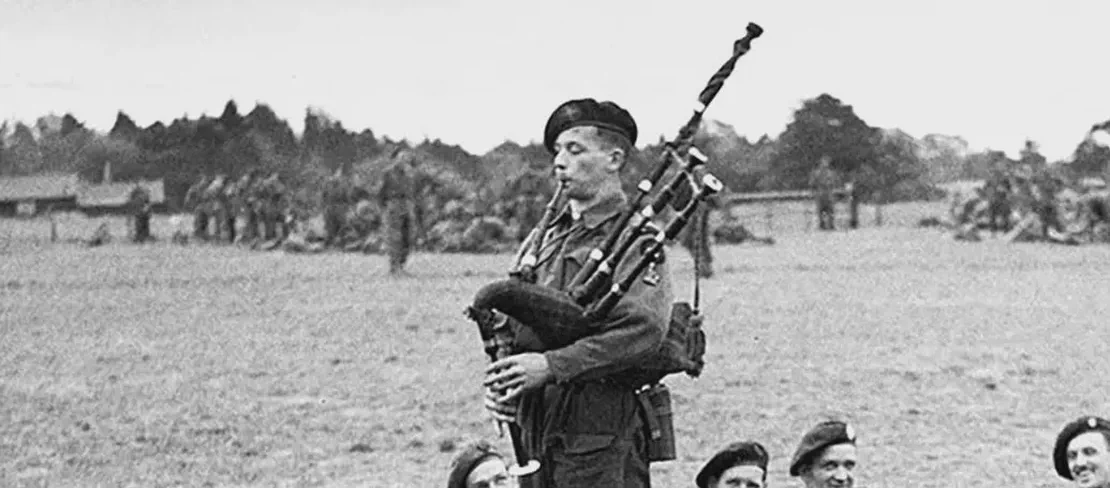
The great Highland bagpipe (Scottish Gaelic: a’ phìob mhòr pronounced [a ˈfiəp ˈvoːɾ] lit. ’the great pipe’) is a type of bagpipe native to Scotland, and the Scottish analogue to the great Irish warpipes.
It has acquired widespread recognition through its usage in the British military and in pipe bands throughout the world.
Great Highland Bagpipes Performers
The bagpipe is first attested in Scotland around 1400. The earliest references to bagpipes in Scotland are in a military context, and it is in that context that the great Highland bagpipe became established in the British military and achieved the widespread prominence it enjoys today, whereas other bagpipe traditions throughout Europe, ranging from Portugal to Russia, almost universally went into decline by the late 19th and early 20th century.
Though widely famous for its role in military and civilian pipe bands, the great Highland bagpipe is also used for a solo virtuosic style called pìobaireachd, ceòl mòr, or simply pibroch.
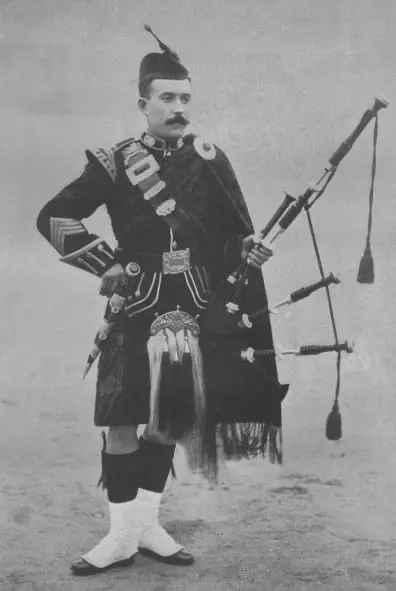
History
Though popular belief sets varying dates for the introduction of bagpipes to Scotland, concrete evidence is limited until approximately the 15th century. One clan still owns a remnant of a set of bagpipes said to have been carried at the Battle of Bannockburn in 1314, though the veracity of this claim is debated. There are many ancient legends and stories about bagpipes which were passed down through minstrels and oral tradition, whose origins are now lost. However, textual evidence for Scottish bagpipes is more definite in 1396, when records of the Battle of the North Inch of Perth reference “warpipes” being carried into battle. These references may be considered evidence as to the existence of particularly Scottish bagpipes, but evidence of a form peculiar to the Highlands appears in a poem written in 1598 and later published in The Complaynt of Scotland which refers to several types of pipe, including the Highland: “On hieland pipes, Scotte and Hybernicke / Let heir be shraichs of deadlie clarions.”
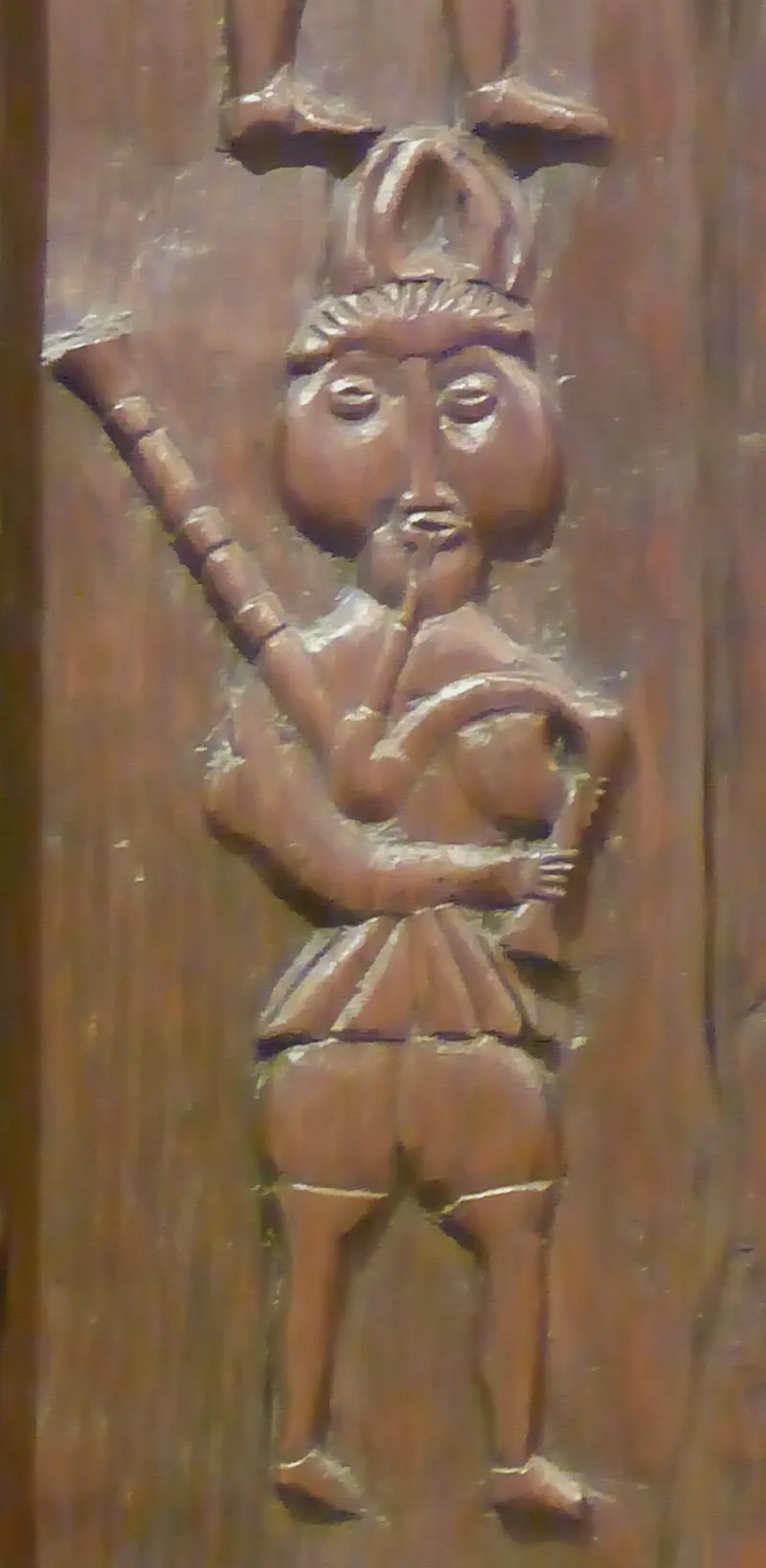
In 1746, after the forces loyal to the Hanoverian government had defeated the Jacobites in the Battle of Culloden, King George II attempted to assimilate the Highlands into Great Britain by weakening Gaelic culture and the Scottish clan system, though the oft-repeated claim that the Act of Proscription 1746 banned the Highland bagpipes is not substantiated by the text itself, nor by any record of any prosecutions under this act for playing or owning bagpipes. However, the loss of the clan chief’s power and patronage and widespread emigration did contribute to its decline. It was soon realised that Highlanders made excellent troops and a number of regiments were raised from the Highlands over the second half of the eighteenth century. Although the early history of pipers within these regiments is not well documented, there is evidence that these regiments had pipers at an early stage and there are numerous accounts of pipers playing into battle during the 19th century, a practice which continued into World War I when it was abandoned after the early battles, due to the high casualty rate.
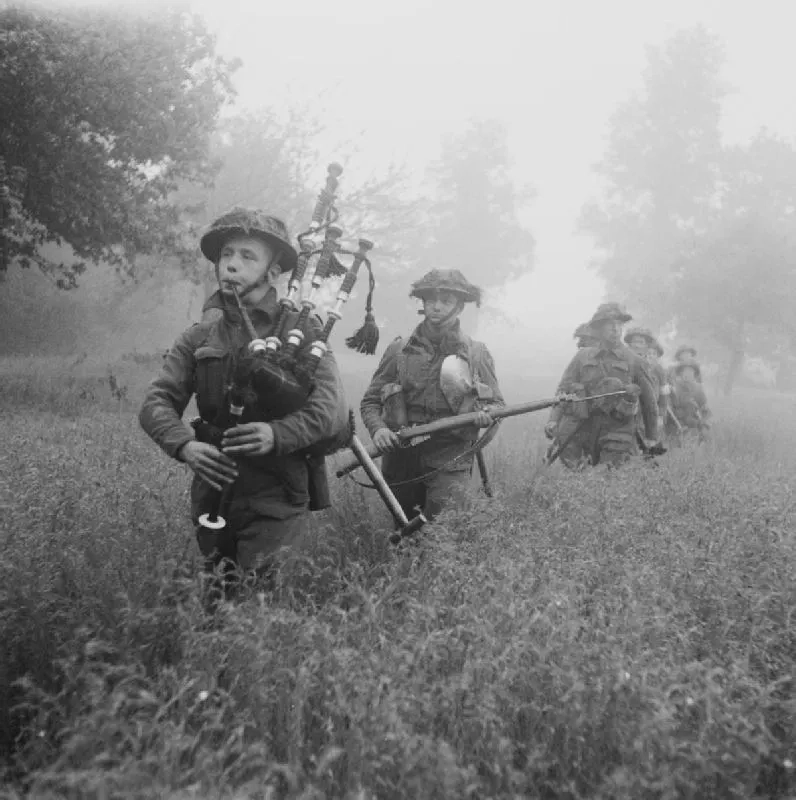
The custom was revived by the 51st Highland Division for their assault on the enemy lines at the start of the Second Battle of El Alamein on 23 October 1943. Each attacking company was led by a piper, playing tunes that would allow other units to recognise which Highland regiment they belonged to. Although the attack was successful, losses among the pipers were high, and they were not used in combat again during the war. Bill Millin, the personal piper of Simon Fraser, 15th Lord Lovat, was at the landing of 1st Special Service Brigade at Sword Beach on 6 June 1944 in Normandy. At Lovat’s request he marched up and down the beach playing his pipes under fire. The Calgary Highlanders had company pipers play during the unit’s first battle in Normandy in July 1944, but likewise refrained from using pipers again for the rest of the war. A final use of the pipes in combat was in 1967 during the Aden Emergency, when 1st Battalion, The Argyll and Sutherland Highlanders were led into the rebel-held Crater district by their pipe major playing the regimental marches.
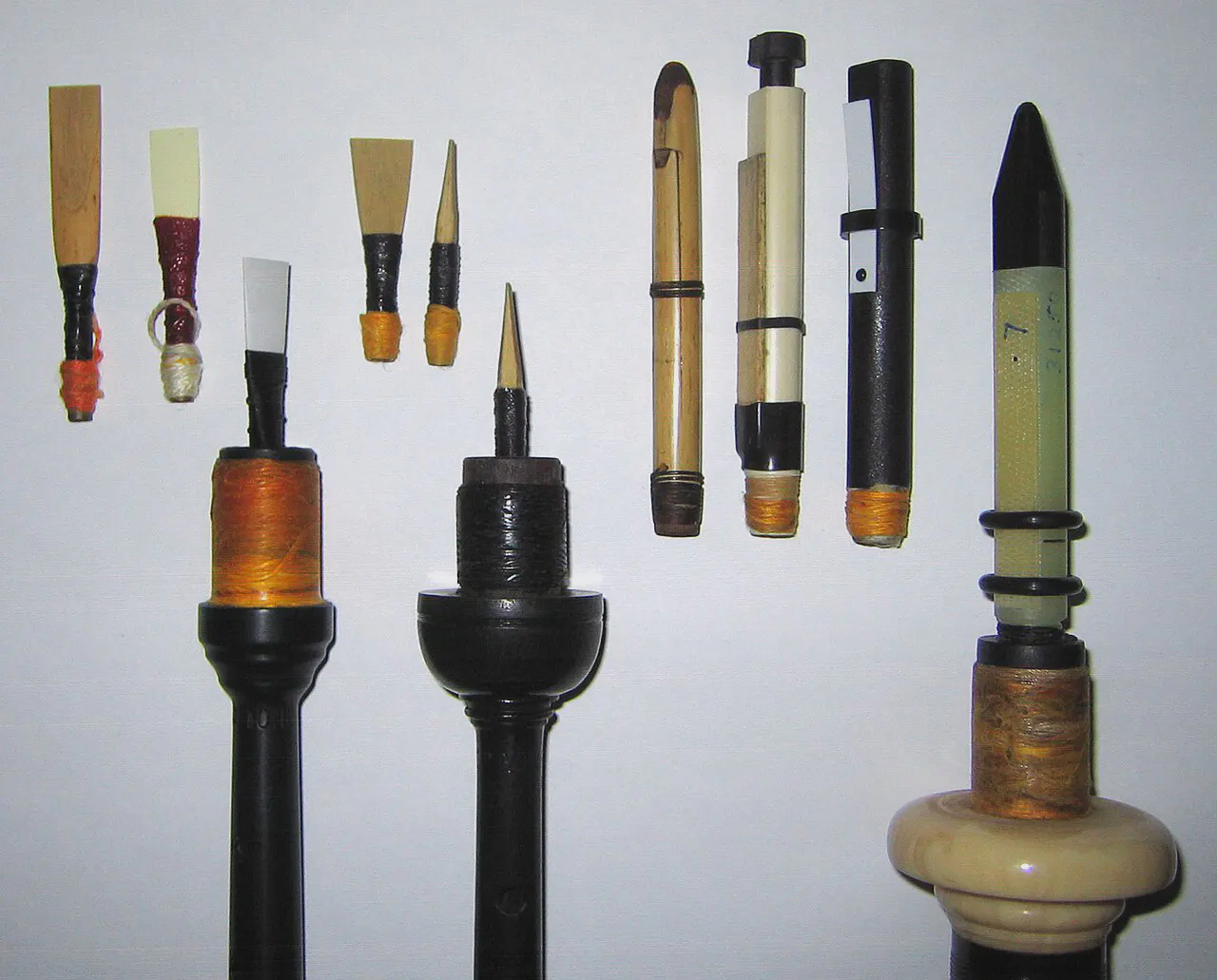
Design
A selection of bagpipe reeds of various design, chanter reeds on the left, drone reeds on the right The great Highland bagpipe is classified as a woodwind instrument, like the bassoon, oboe, and clarinet. Although it is further classified as a double-reed instrument, the reeds are all closed inside the wooden “stocks”, instead of being played directly by mouth as most other woodwinds are. The great Highland bagpipe actually has four reeds: the chanter reed (double), two tenor drone reeds (single), and one bass drone reed (single).
A modern set has a bag, a chanter, a blowpipe, two tenor drones, and one bass drone.
Scale
The scale of the chanter is in Mixolydian mode, which has a flattened seventh scale degree. It has a range from one whole tone lower than the tonic to one octave above it. The drones are tuned to this tonic note, called A (specifically A4). The nine notes of the chanter scale are “low G, low A, B, C (sounds as a C♯), D, E, F (sounds as a F♯), high G, and high A”. However, the A pitch of most pipers and pipe bands currently is somewhere around 470–480 Hz, which is actually sharper than standard pitch B♭4 at 466.16 Hz. So the scale actually sounds closest to A♭, B♭, C, D, E♭, F, G, A♭, B♭, and can be considered a transposing instrument in D-flat major. Historically it was indeed flatter, as evidenced by recordings, and extant instruments.
D Major
Highland bagpipe music is written in the key of D major, where the C and F are sharp (despite the key-signature usually being omitted from scores), however only some tunes are in D major. Due to the lack of chromatic notes, to change key is also to change modes; tunes are in A Mixolydian (most commonly), D major, B minor, or occasionally E Dorian. In concert pitch (notes on the piano) it will be B♭ Mixolydian, E♭ major, C Aeolian, or occasionally F Dorian.
Traditionally, certain notes were sometimes tuned slightly off from just intonation. For example, on some old chanters the D and high G would be somewhat sharp. According to Forsyth (1935), the C and F holes were traditionally bored exactly midway between those for B and D and those for E and G, respectively, resulting in approximately a quarter-tone difference from just intonation, somewhat like a “blue” note in jazz.
Modern - Mixolydian Scale
Today, however, the notes of the chanter are usually tuned in just intonation to the Mixolydian scale, with the G tuned to the harmonic seventh which is significantly flatter than the just minor seventh or the equal temperament minor seventh. The two tenor drones are an octave below the keynote of the chanter (low A), and the bass drone two octaves below. There are some documented examples of other tunings: Forsyth lists three traditional drone tunings: Ellis, A3–A3–A2; Glen, A4–A4–A2; and Mackay, G3–B3–C2.
New Materials
Modern developments have included reliable synthetic drone reeds as well as synthetic bags that deal with moisture arguably better than hide bags.
The chanter reed is typically made out of cane. It is possible to get synthetic reeds for chanters but it is not very common. The cane reeds change pitch as the moisture levels change, meaning that as they are played they go out of tune. Until recently drone reeds were also cane but now many pipers have replaced cane reeds with synthetic reeds. Cane drone reeds are incredibly unreliable; they could stop working without warning and also change pitch as they are played. Synthetic reeds are much more reliable, they are easier to use and don’t change pitch meaning once the drones are tuned to each other they will stay there and only have to be tuned to the chanter.
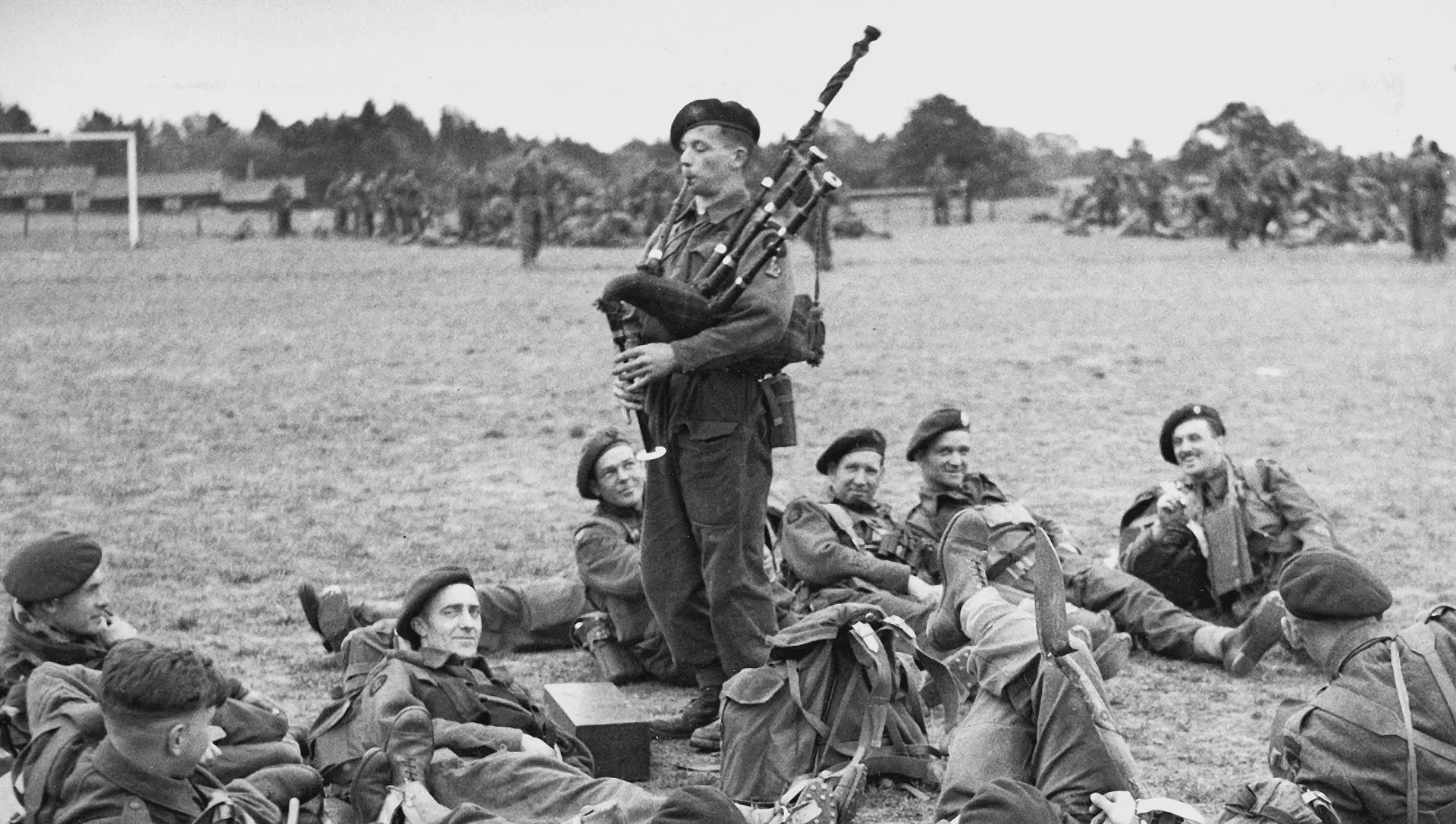
- Bagpipes